House music is a genre that stands out for its ability to energize, uplift, and deeply connect with listeners.
It can transform any atmosphere into an immersive experience, and at the heart of this transformation are house chord progressions.
That’s why, as a music producer, knowing how to create effective house chord progressions and understanding the most common examples is crucial.
It can elevate your tracks from good to unforgettable, and help you resonate with your audience on a deeper level.
In this article, we’ll dive into the essentials of house chord progressions, equipping you with the knowledge and skills to craft your own compelling house music.
In today’s article, we’ll break down:
- The basics of creating house music chord progressions ✓
- The essence & application of major chords & minor chords ✓
- The Role of a major scale and minor scale in house music ✓
- The significance of diatonic chords in harmony ✓
- 8 common chord progressions in house music ✓
- Advanced techniques in chord progression design ✓
- Creative uses of sound design & melody creation ✓
- Insights into minor keys for emotional depth ✓
- Much more ✓
After this blog post, you’ll have a comprehensive understanding of the different elements that make up house chord progressions.
With these skills and knowledge, you’ll be able to create house tracks that sound good and resonate with your audience, much like a seasoned professional.
So, let’s dive in…
Table of Contents
The Basics of Crafting House Music Chord Progressions
In the world of digital music production, house music stands out with its unique sound and energy, largely driven by its chord progressions. Understanding these house chord progressions is crucial for any producer looking to create compelling house tracks. Let’s explore the fundamentals that make house music chord progressions so distinctive and effective.
-
The Essence of House Music Chords
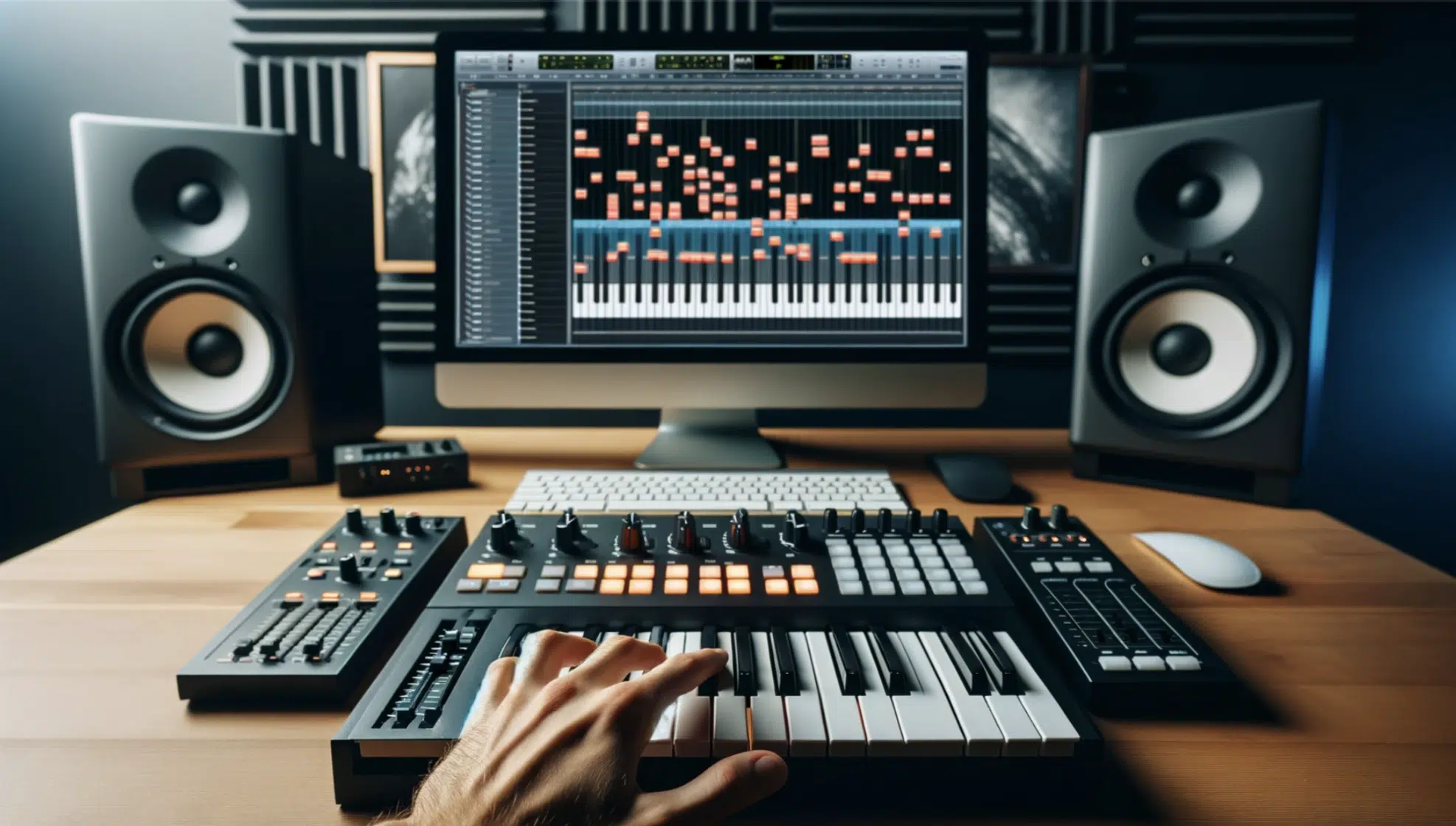
House music chords form the very foundation of this genre’s soulful, exciting, and energetic sound.
The right chord progression can transform a simple melody into a captivating house track.
House chord progressions are more than just a sequence of chords.
They create the:
- Mood
- Rhythm
- Identity
This making house chords integral to the genre’s overall appeal.
The uniqueness of house music chords lies in their ability to blend simplicity with complexity.
A well-crafted chord progression in house music can simultaneously feel familiar yet innovative, offering a sense of musical journey and resolution.
This blend is what keeps listeners hooked and dancing.
Understanding the structure and function of house chords is essential for any music producer.
These chord progressions often include a mix of major chords and minor chords 一 providing a dynamic range of emotions.
From uplifting major progressions to more introspective minor ones, the versatility of house chords allows for endless creative possibilities in your music production process.
Understanding Major Chords and Minor Chords
Major chords and minor chords form the basic building blocks of house music chord progressions.
-
Major Chords
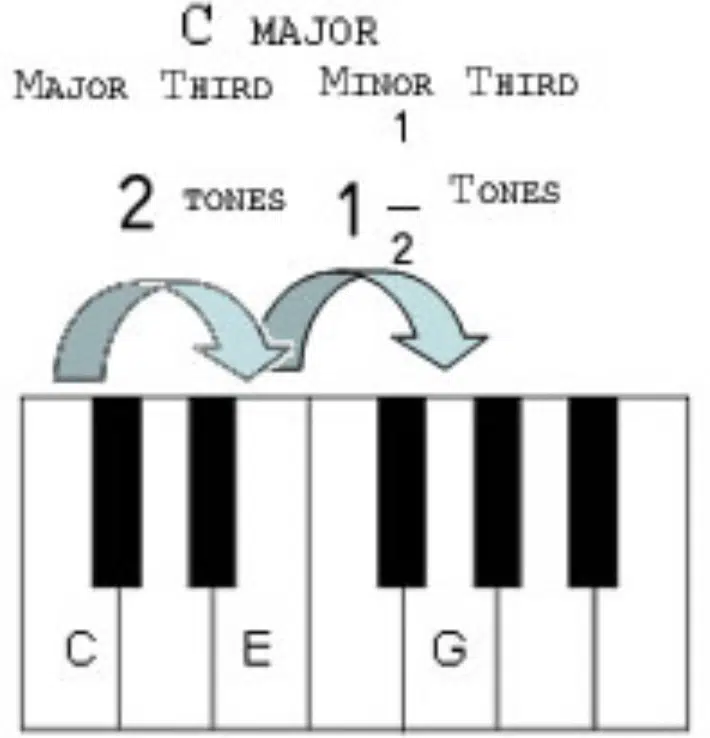
Major chords, characterized by their happy and bright sound, often set the tone for a more upbeat and energetic track.
-
Minor Chords
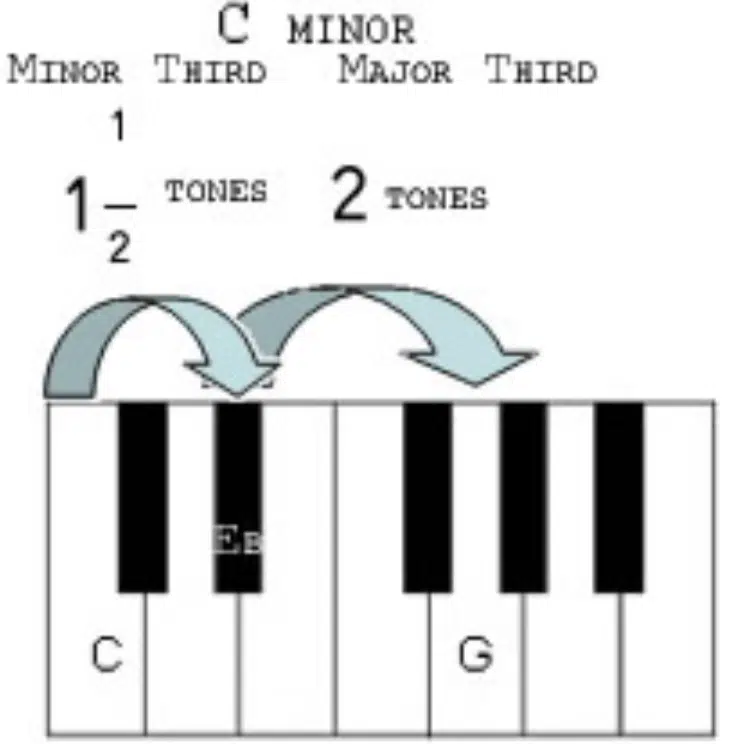
Minor chords, offer a deeper, more melancholic feel, often used to add emotional depth to a track.
Choosing between major chords or minor chords can drastically alter the mood of a house track.
A chord progression that starts with:
- A major chord 一 Converys a sense of optimism.
- A minor chord 一 Introduces a sense of mystery or introspection.
As a music producer, you should constantly experiment with these chords to find the perfect balance that resonates with the theme of your track.
It’s not just about choosing between major chords and minor chords; it’s also about how they are used together.
A seamless transition from a major to a minor chord within a chord progression can create a sense of contrast and tension, vital for keeping the listener engaged.
The interplay of major/minor chord is a hallmark of effective house music chord progressions.
This offers a rich tapestry of sounds and emotions.
The Role of Major Scales and Minor Scales in House Music
Major scales and minor scales play a pivotal role in shaping and defining house music chord progressions. These scales serve as the framework within which chords are formed and sequenced. Understanding the nuances of each chord scale is crucial for creating chord progressions that are harmonically pleasing and rhythmically engaging.
-
The Major Scale

The major scale in house music (like the C major scale or E major scale) often results in progressions that are uplifting and energetic.
It’s perfect for tracks meant to energize and uplift the audience.
-
The Minor Scale
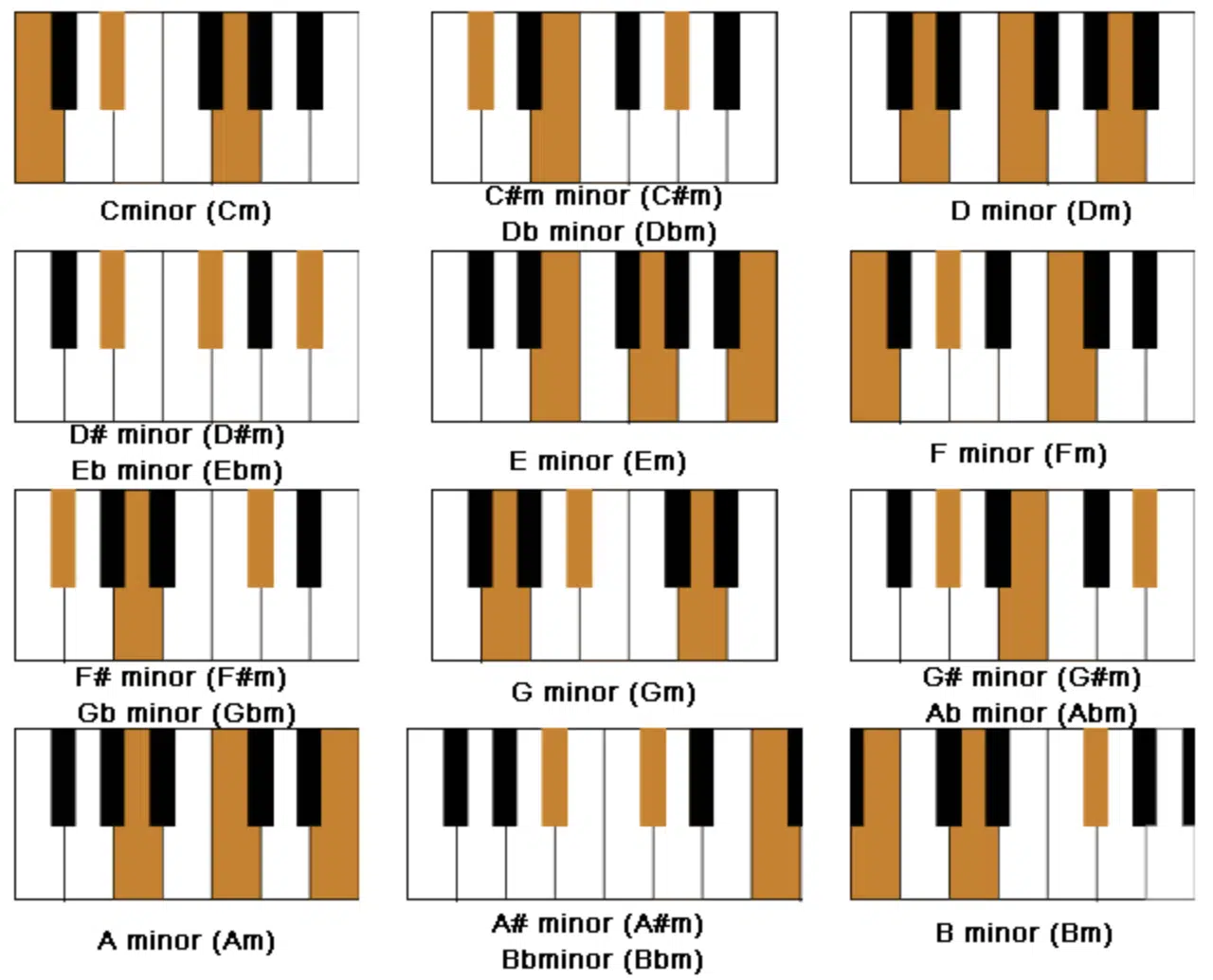
The minor scale offers a richer, more complex emotional palette.
The minor scale is ideal for songs with a deeper, more introspective vibe.
The key to mastering house music chord progressions as a music producer lies in understanding the relationship between chords within these scales.
Knowing which chords naturally follow each other and how they interact within a chord scale helps in crafting progressions that feel both natural and dynamic.
This knowledge is fundamental in creating house tracks that are both technically sound and emotionally resonant.
NOTE: In the realm of house music, triad chords serve as the fundamental building blocks, providing a simple yet effective harmonic base for many popular tracks.
-
Diatonic Chords: A Key to House Music Harmony

Diatonic chords, derived from a single scale, are essential for creating harmonically rich house music chord progressions.
These diatonic chords ensure that all the notes in a progression belong to the same key, providing a sense of unity and coherence in the track.
Understanding diatonic chords is crucial for crafting progressions that are both complex and harmonically balanced.
In house music, the use of diatonic chords allows for a seamless flow of harmony throughout the track.
These chords can be used to build tension and release, a fundamental aspect of musical storytelling.
The right combination of diatonic chords can evoke a wide range of emotions with just one chord, like:
- Joy
- Excitement
- Melancholy
- Contemplation
- Etc.
The best approach to diatonic chords involves experimenting with their order and rhythm to create unique and memorable progressions.
This experimentation often leads to the discovery of new harmonic possibilities 一 pushing the boundaries of traditional house music chord progressions.
NOTE: The beauty of diatonic triads in house music lies in their ability to create a harmonious and cohesive sound.
They are chords made exclusively from notes within a single scale.
8 Common Chord Progressions in House Music
House music is known for its diverse and dynamic range of chord progressions that form the backbone of its rhythmic and emotional appeal. These chord progressions are not just a series of chords; they are a journey through sound and emotion. Remember, you don’t need a degree in music theory to create killer chord progressions anymore. So, let’s break it down some iconic chord progressions that define the house music genre.
#1. I-IV-V: The Classic Triad
The I-IV-V chord progression, known as the Classic Triad, is one of the most fundamental and widely used in house music.
This classic triad (rooted in simplicity) creates a sense of musical completeness and satisfaction.
It utilizes the following chords:
- Root note (I)
- Subdominant (IV)
- Dominant (V) chords
This progression offers a sense of familiarity and comfort, making it a staple in many house music tracks.
This progression’s versatility lies in its ability to be both the foundation of a song and a springboard for more complex arrangements.
Whether used in its basic form or as a starting point for embellishments, the I-IV-V chord progression remains a favorite among house music producers.
Its straightforward yet effective harmonic structure is super desirable.
“Wake Me Up” by Avicii is a great example of a modern song using the I-IV-V progression 一 blending country elements with house music.
#2. ii-V-I: The Jazz Influence
The ii-V-I progression, a nod to the influence of jazz, brings a sophisticated touch to house music.
This chord progression moves from the supertonic (ii) root note to the dominant (V) and resolves on the tonic (I), creating a smooth and flowing harmonic motion.
The ii-V-I is particularly effective in bringing a sense of resolution and closure to a musical phrase.
In house music, this progression often appears with lush chord voicings and extended harmonies 一 adding a layer of complexity and depth to the sound.
The ii-V-I chord progression exemplifies how house music can incorporate elements from different genres to create something unique and compelling.
“Strobe” by Deadmau5 is a great example.
This iconic song from Deadmau5 incorporates a variation of the ii-V-I progression, particularly in its build-ups and breakdowns.
This song masterfully blends the jazz-influenced chord progression with electronic elements, creating a captivating and memorable piece in the house music genre.
#3. vi-IV: Emotionally Driven Progressions
The vi-IV chord progression is another popular choice in house music, known for its emotionally driven quality.
Starting on the minor sixth (vi) root note and moving to the major fourth (IV) creates a poignant and reflective mood, perfect for deeper and more introspective tracks.
This progression’s strength lies in its ability to evoke a wide range of emotions, from melancholy to hope.
It’s a testament to the emotional versatility of house music and how chord progressions can be used to convey complex feelings.
“In the Name of Love” by Martin Garrix & Bebe Rexhac is a notable example of using the vi-IV progression in a popular house song.
It contributes to the song’s emotional depth and is central to creating its elevating and impactful sound.
#4. D. I-V-vi-IV: The Pop Music Sensation
The I-V-vi-IV chord progression has gained immense popularity, not just in house music but across various genres, particularly in pop music.
This pop chord progressions cyclic nature creates a sense of endless motion and energy, moving:
- From the root note (I)
- To the dominant (V)
- To the minor sixth (vi)
- Then, to the fourth (IV)
In house music, this progression is often used to create catchy and memorable hooks that resonate with a wide audience.
Its universal appeal lies in its ability to be both uplifting and emotionally engaging 一 making it a go-to choice for many producers looking to create hit house/pop songs.
The adaptability of the I-V-vi-IV chord progression allows it to be used in various contexts, from upbeat dance tracks to more laid-back, chill vibes.
Its simplicity and effectiveness in conveying emotion make it a prominent element in house music.
“Titanium” by David Guetta feat. Sia utilizes this chord progression brilliantly; making it catchy and giving it that anthemic quality.
#5. vi-ii-V-I: A Twist on the Classic
The vi-ii-V-I chord progression offers a fresh take on the classic chord sequence by:
- Starting on the minor sixth (vi) 一 adding a touch of introspection
- Then, moving through the supertonic (ii)
- To the dominant (V)
- Finally, resolving on the tonic (I)
This progression adds a layer of sophistication and depth to house tracks.
The interplay of minor and major chords in this chord progression provides a rich harmonic landscape.
It’s ideal for creating your own productions with a more nuanced and complex emotional palette.
This house chord progression is a favorite among producers who want to explore beyond the standard chord sequences and delve into more intricate harmonic structures.
The song “New Rules” by Dua Lipa is a popular example.
This track incorporates the vi-ii-V-I progression; offering a modern pop take on this classic sequence, often found in jazz and now in contemporary house and pop music.
#6. I-VI-IV-V: The Progressive House Staple
The I-VI-IV-V progression is a cornerstone in progressive house music, known for its driving and energetic feel.
This sequence of chords creates a sense of forward motion and anticipation, essential in building the dynamic crescendos characteristic of the genre.
Utilizing the root note (I), submediant (VI), subdominant (IV), and dominant (V) chords, this progression provides a solid harmonic foundation for layering other musical elements like:
- Melodies
- Bass lines
- Hamornies
It’s a powerful tool for crafting songs that are both rhythmically compelling and emotionally engaging.
“Don’t You Worry Child” by Swedish House Mafia is a great modern example.
This progressive house anthem uses the I-VI-IV-V progression 一 exemplifying its uplifting and energetic nature.
#7. III-vi-ii-V: Deep House Chords Specialty
III-vi-ii-V is particularly favored in deep house chord progressions, known for its rich and soulful sound.
Starting with the mediant root note(III), this chord progression then moves through the minor sixth (vi), the supertonic (ii), and finally resolves on the dominant (V).
This sequence offers a unique blend of harmonic richness and subtlety, perfect for the smooth and often more reflective feel of deep house music.
The use of the mediant first chord as a starting point sets a distinct mood; differentiating this progression from more conventional ones.
It allows for a more expressive and nuanced exploration of harmony, ideal for deep house tracks that often rely on mood and atmosphere as much as rhythm.
This progression’s beauty lies in its ability to weave together both:
- Major chords
- Minor chords
It’s a testament to the depth and versatility of house music, and a favorite tool for music producers looking to create songs with a deeper, more soulful edge.
A perfect example of a house song incorporating this progression is “White Noise” by Disclosure feat. AlunaGeorge 一 adding to it’s deep and rhythmic texture.
#8. vi-IV-I-V: The EDM Favorite
The vi-IV-I-V progression has become a hallmark of EDM chord progressions and house music, known for its catchy and uplifting nature.
This chord progression starts with the minor sixth (vi) root note, adding a touch of introspection, before moving to the:
- Major fourth (IV)
- Tonic (I)
- Dominant (V)
It creates a sense of completeness and satisfaction.
This chord sequence is particularly effective in creating anthemic and memorable hooks that are a staple in EDM music.
The ability of these EDM chord progressions to balance emotional depth with energetic uplift makes it a versatile tool for your own productions.
Especially if you’re aiming to create your own productions that resonate on the dance floor.
The adaptability of this one chord progression means it can be used in a variety of contexts, from festival main stages to intimate club settings.
A perfect example would be the song “Closer” by The Chainsmokers feat. Halsey.
This EDM hit exemplifies the vi-IV-I-V progression, showcasing its universal appeal and catchy nature in modern electronic music.
So, if you’re looking for enticing EDM chord progressions, look no further.
Advanced Techniques in House Chord Progressions
To truly master house music production, one must delve into advanced techniques that can elevate chord progressions from good to exceptional. These techniques involve a deeper understanding of harmony, rhythm, and texture, and can transform a basic chord progression into a captivating musical experience.
-
Sound Design for House Chords
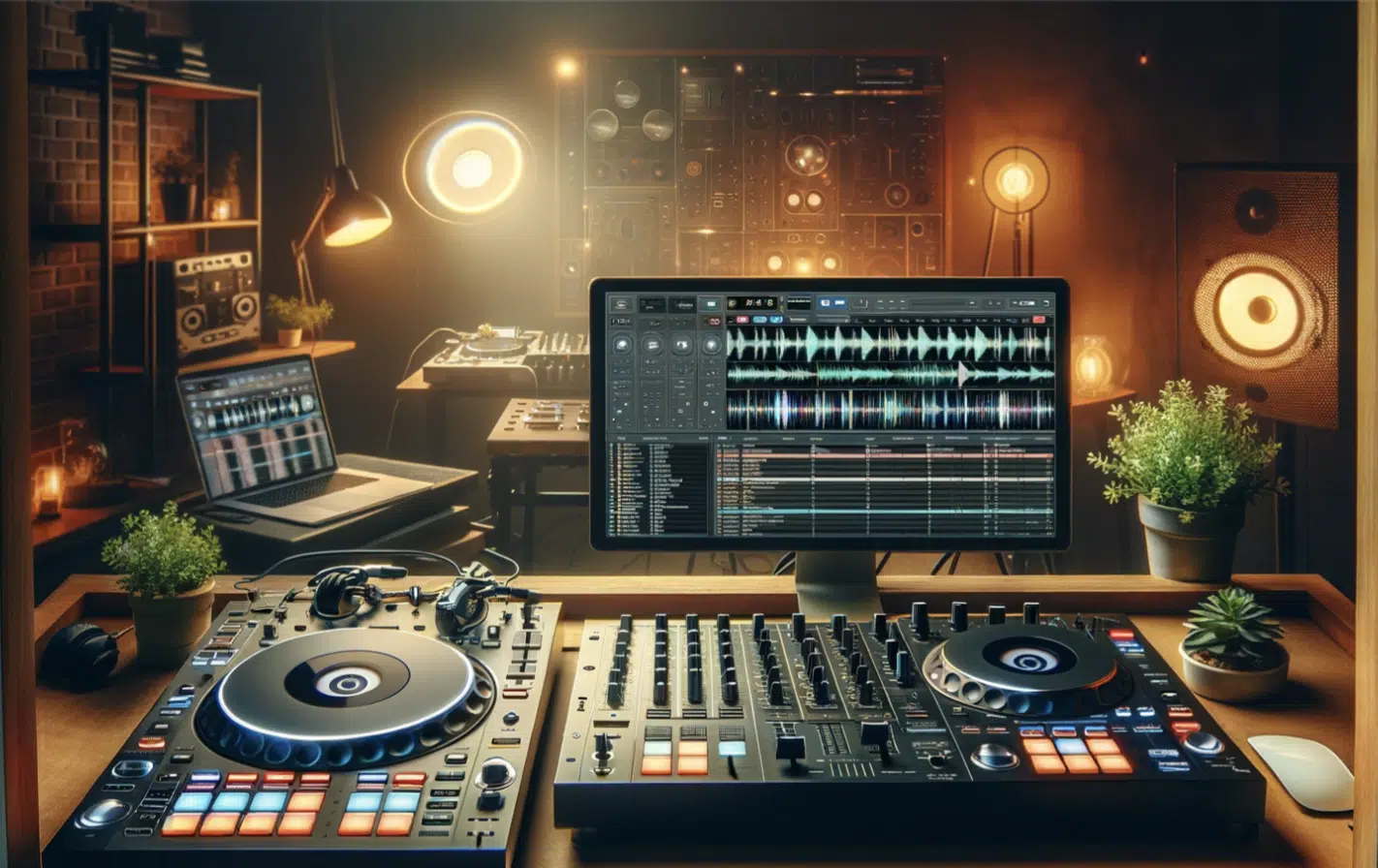
Sound design plays a crucial role in bringing house chord progressions to life.
The choice of sound can dramatically alter the character and impact of a progression.
Whether it’s a warm, analog pad for deep house chords or a bright, digital synth for progressive house, the timbre and texture of the sound are as important as the chords themselves.
The key to finding the perfect sound for your chord progression is experimenting with:
Layering different sounds can add depth and complexity, while automation of filters and effects can bring movement and dynamism to the progression.
Sound design is not just about technical skill, but also about creative vision.
Understanding how the sound of your chords fits within the overall context of your track is crucial.
It’s about making choices that enhance the emotional and rhythmic qualities of the progression 一 ensuring that your other chords are not just heard, but felt.
-
Creating Melodies with Chord Progressions

A great chord progression provides the perfect foundation for memorable melodies.
In house music, the interplay between the chord progression and the melody is what often defines the character of a track.
- A strong melody 一 Can elevate a simple chord progression.
- A complex progression 一 Can inspire intriguing melodic ideas.
When creating melodies over chord progressions, it’s important to consider the same notes within the chords as starting points.
These notes can be used to build melodies that are harmonically consonant with the progression.
Experimenting with different rhythmic patterns and melodic contours can lead to the discovery of unique and captivating melodies.
One effective technique is to use the chord tones as anchor points for your melody, weaving in and out of these tones to create a sense of tension and release.
This approach can create melodies that are both harmonically grounded and dynamically engaging.
This adds an additional layer of interest to your house tracks.
-
Using Minor Keys for Emotional Depth
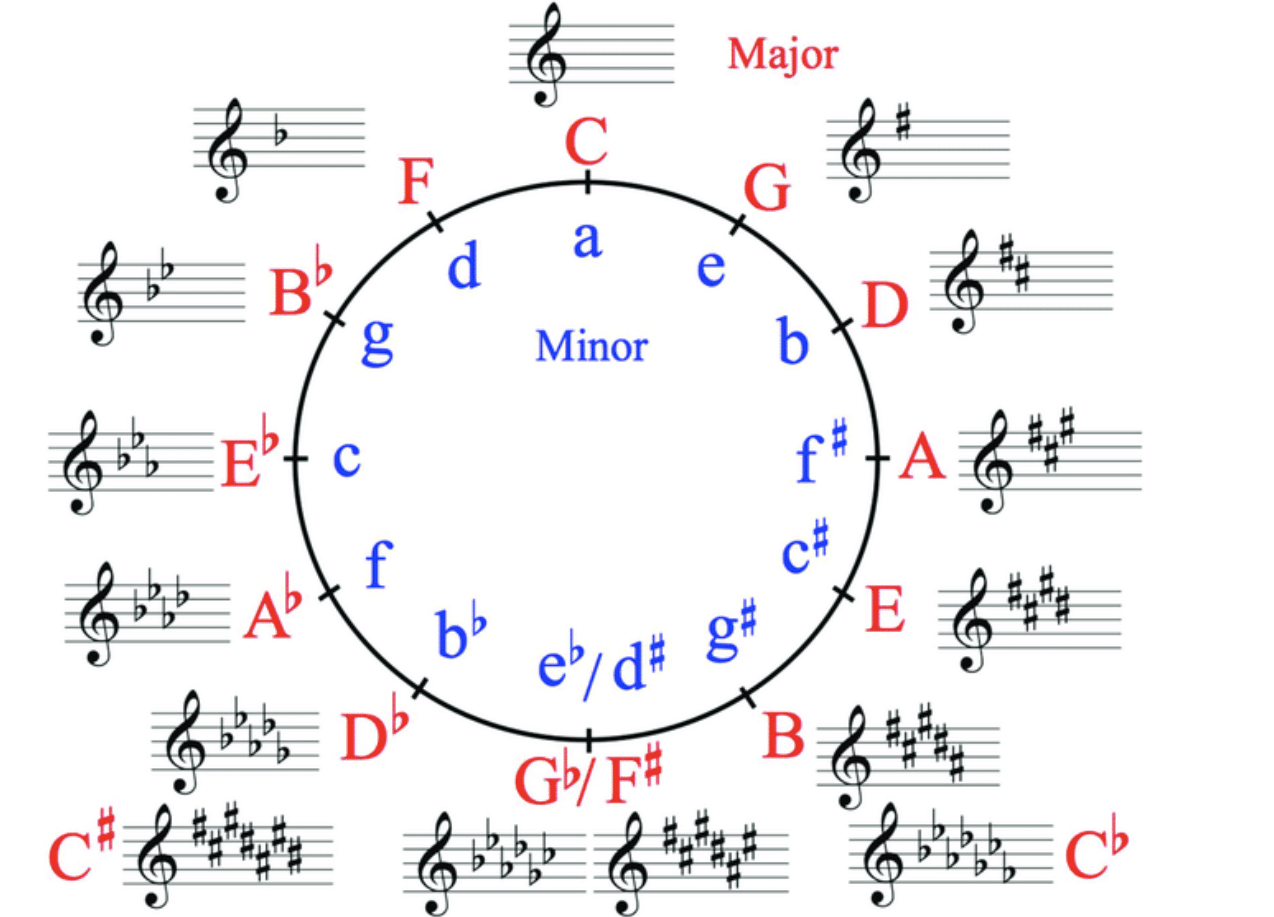
Minor keys, not to be confused with major keys, play a significant role in adding emotional depth to house music.
One chord progression in a minor key can evoke a range of emotions, from melancholy and introspection to intensity and drama.
Understanding how to effectively use minor keys is crucial for music producers, sound designers, and artists looking to infuse their songs with emotional richness.
When working with minor keys, it’s important to be mindful of the balance between:
- Tension
- Resolution
A chord progression that lingers too long on a minor chord can become overly somber, while one that resolves too quickly may lose its emotional impact.
Finding the right balance is key to creating a progression that is emotionally engaging without being overpowering or predictable.
Incorporating techniques like modal interchange (where chords from a parallel major or minor scale are used) can add an intriguing twist to a minor key progression.
This not only enhances the harmonic interest but also provides a wider emotional palette to work with.
In turn, this allows for more expressive and dynamic deep house music tracks.
-
Crafting Your Own Progressions With Your Piano Roll
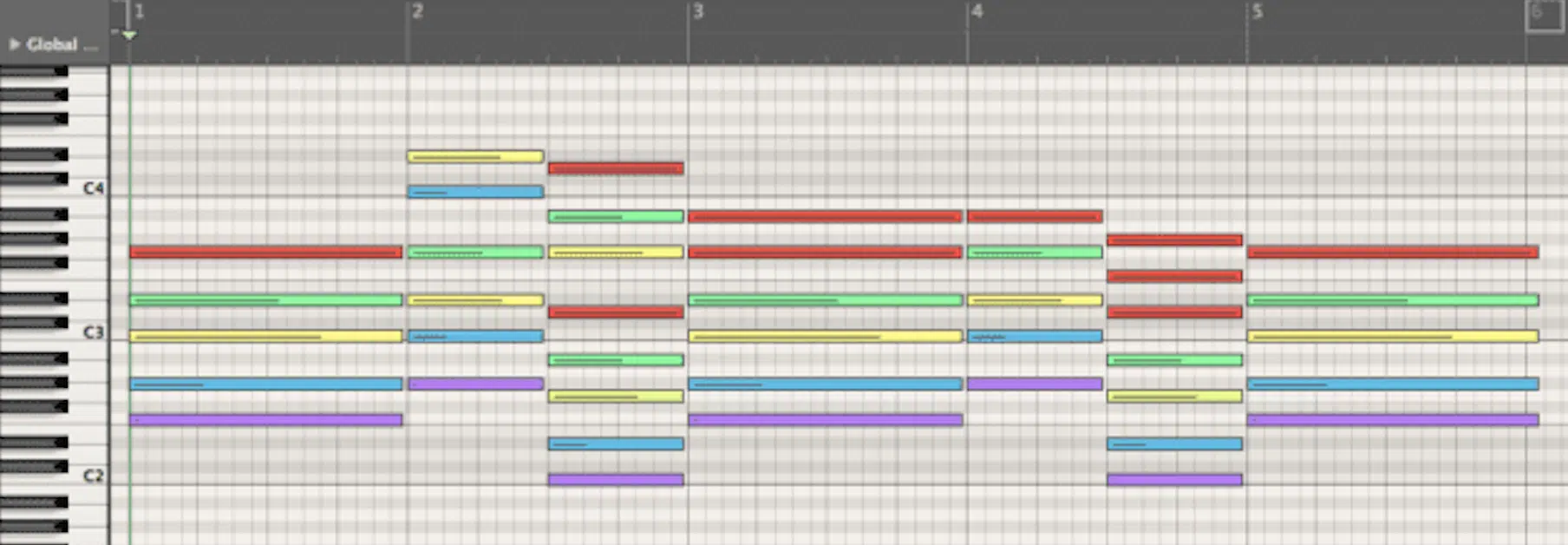
In the digital music production world, the piano roll is an invaluable tool for crafting your own chord progressions.
It offers a visual representation of your chords and melodies 一 making it easier to experiment with different progressions and structures.
The piano roll enables producers to easily manipulate:
- Notes
- Rhythms
- Harmonies
It allows for precise and creative control over their progressions.
When using the piano roll, you can start by laying down a basic chord progression and then tweak the rhythm, duration, and voicing of the chords to find the perfect groove.
This process is not just about technical adjustments 一 it’s about feeling the progression and ensuring that it resonates with the overall vibe of the track.
Another advantage of the piano roll is the ability to quickly try out different inversions and extensions, adding richness and complexity to the chords.
Embracing the creative possibilities of the piano roll can elevate your house music production to new heights.
-
Utilizing MIDI Packs and Sample Packs
MIDI packs and sample packs can be a great source of inspiration for house music chord progressions.
They provide pre-made progressions and patterns that can be easily integrated into your own tracks, saving time and sparking new creative ideas.
Whether you’re looking for classic deep house chords or more avant-garde progressions, there’s a wealth of resources available.
When working with these packs, you can modify and personalize the progressions to fit your deep house musical style.
This might involve:
- Changing a few chords
- Altering the rhythm
- Adding additional notes to create a more complex sound
The key is to use these diverse packs as a starting point, not an endpoint.
It ensures that your tracks retain a sense of originality, not just containing the same chord progression as everyone else.
You don’t need a degree in music theory anymore to be able to create hit songs like Calvin Harris; just a desire to experiment.
Additionally, sample packs can offer not just chord progressions but also a variety of sounds and textures to experiment with (regardless of genre/sub-genre).
They can be especially useful for sound design, providing unique audio elements that can enhance the overall production quality of your house tracks.
House Chord Progressions: Final Thoughts
Mastering the house chord progressions we covered today is key to creating impactful and resonant house music.
The right house chord progression can breathe life into your track, infusing it with the unique energy and emotion that only house music can provide.
Whether you’re a beginner or a seasoned producer, understanding and effectively utilizing house chord progressions is an essential skill in your music production arsenal.
To further enhance your journey in crafting compelling house tracks, you should download the legendary House & Deep House MIDI Chord Collection pack.
This comprehensive collection is an invaluable resource for any producer looking to explore the full potential of house chord progressions.
With a total of 1830 MIDI files, this pack provides extensive creative possibilities.
It includes 25 major and minor genre-specific progressions for each of the 12 keys 一 allowing you to experiment with a variety of sounds and moods.
Additionally, you’ll find over 35 major and minor genre-specific individual chords for each key, giving you the building blocks to create your own unique progressions.
But that’s not all – the House & Deep House MIDI Chord Collection pack also comes with a bonus Theory/Melody Writing Walkthrough PDF.
This extra resource is perfect for both beginners and experienced producers, as it offers valuable insights into music theory and melody writing specifically tailored to house music.
Remember, house chord progressions are more than just a series of chords – they are the heartbeat of your track.
They have the power to set the tone, create an atmosphere, and evoke emotions in a way that few other elements can.
So, embrace the power of house chord progressions, and let them inspire you to create unforgettable music.
Until next time…





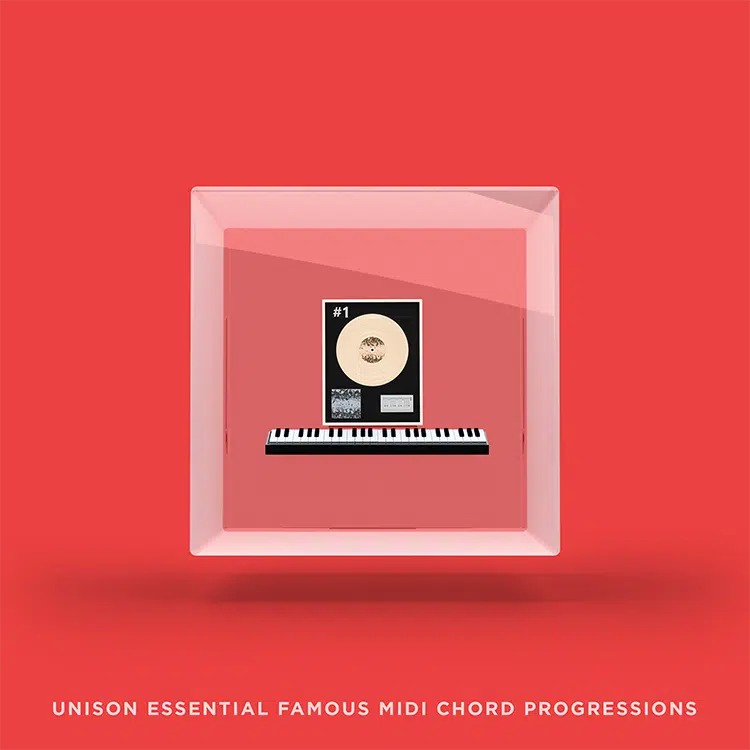


Leave a Reply
You must belogged in to post a comment.